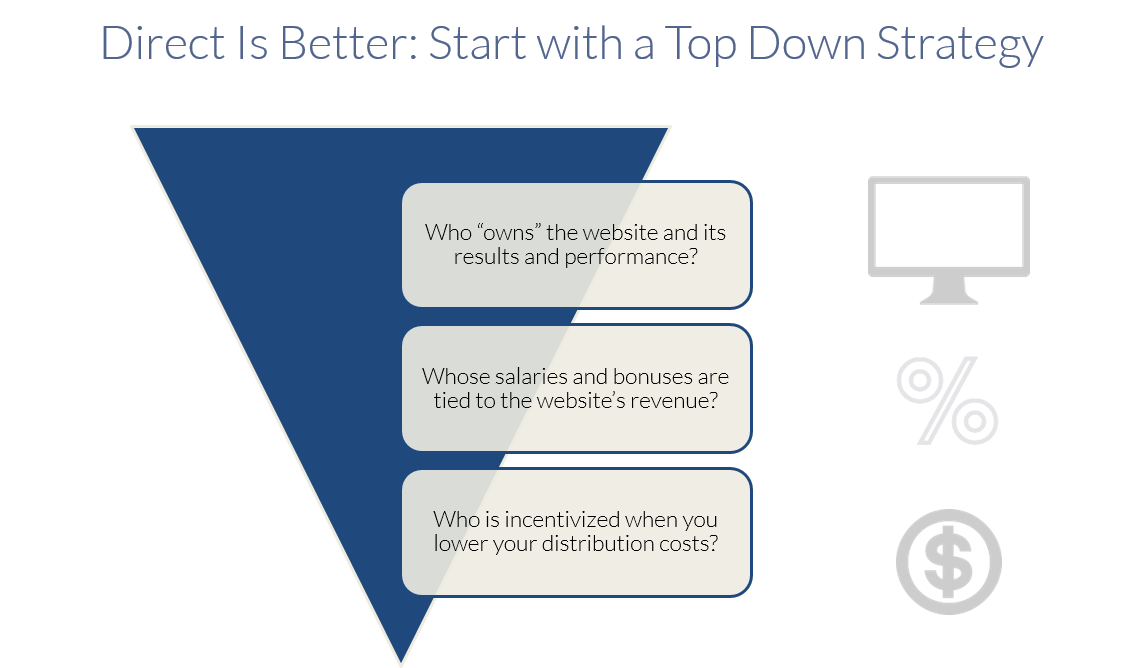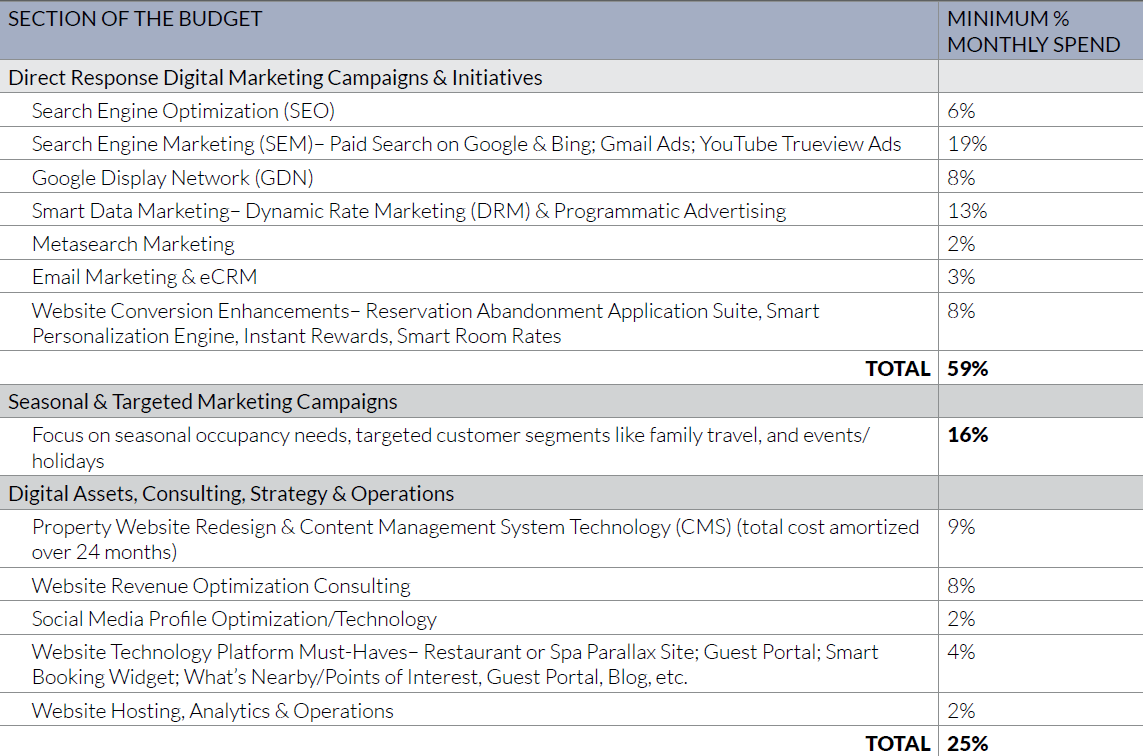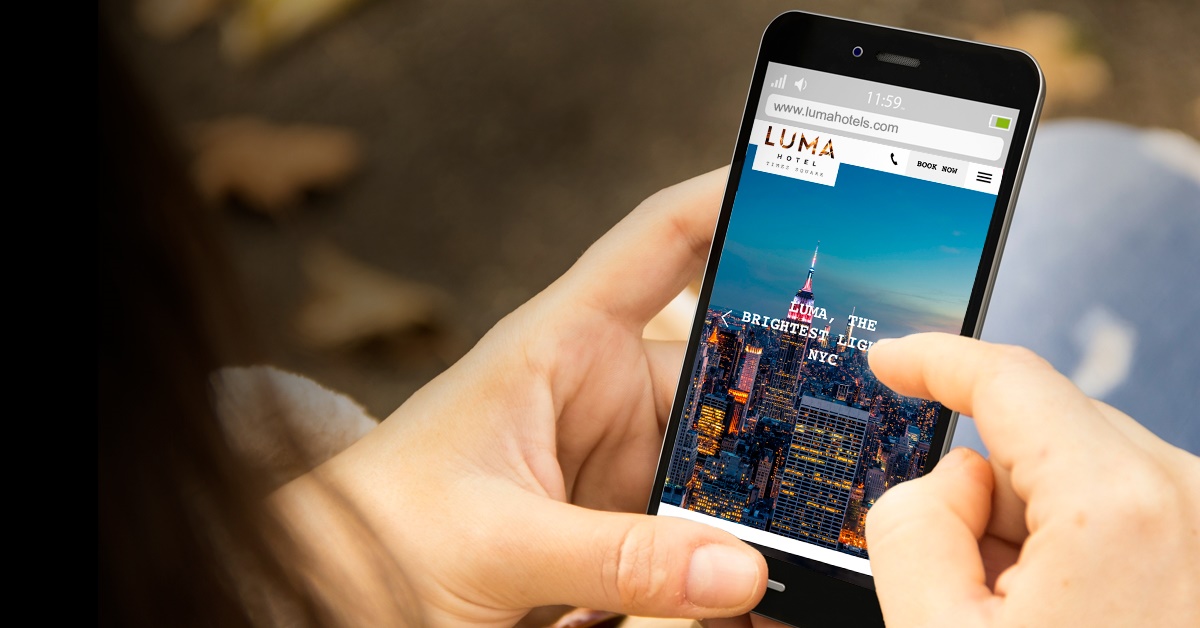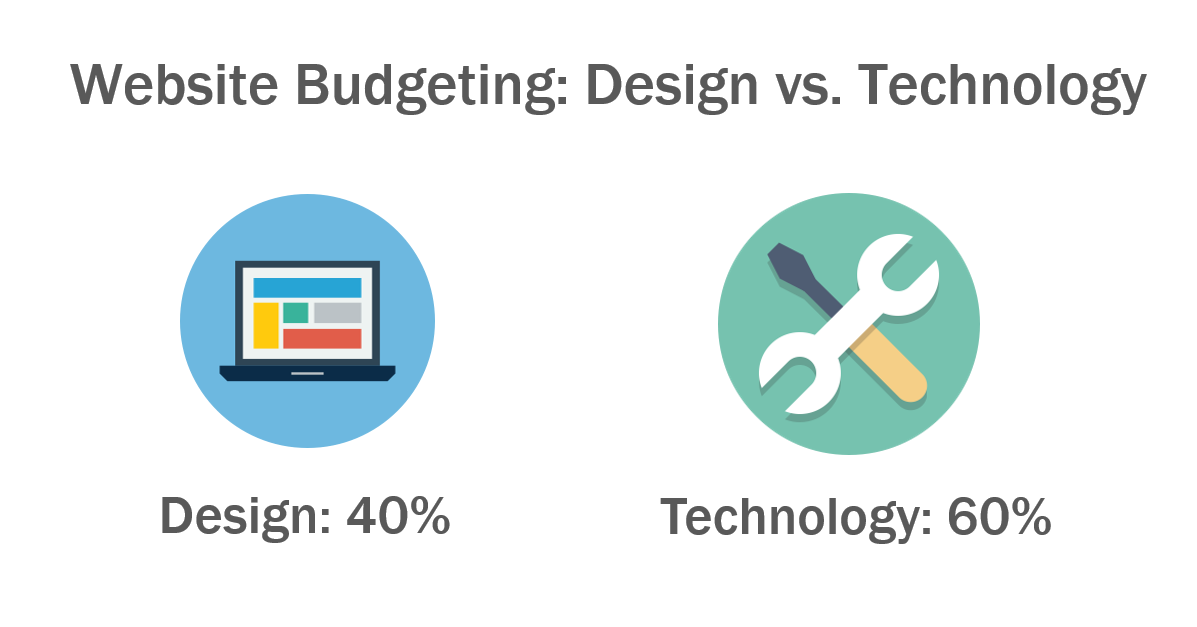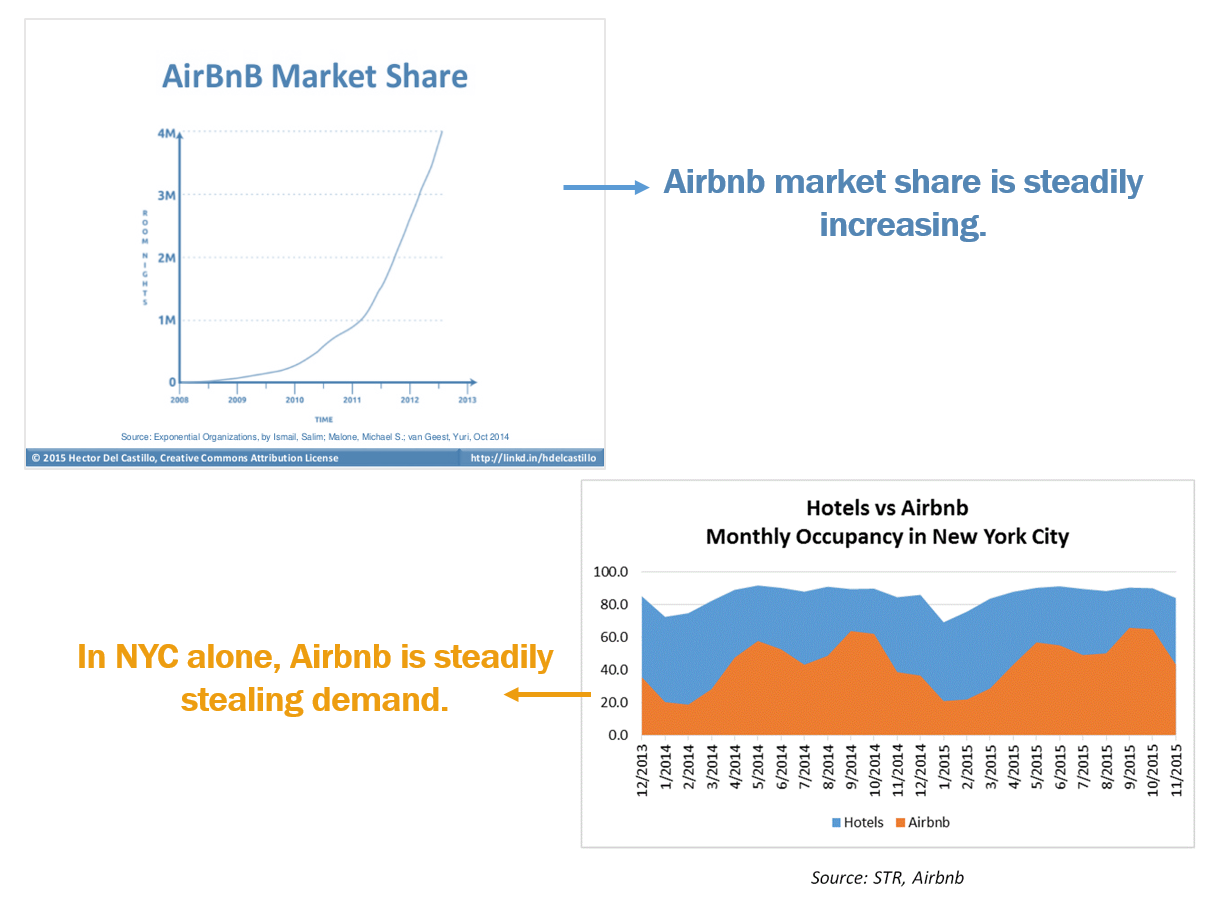By Max Starkov and Mariana Safer
Reflecting on 2016 and successful hotel digital marketing campaigns that impacted the industry, there was an obvious and substantial emphasis on ‘Book Direct’ strategies. Hoteliers have been testing out multiple strategies to increase bookings on their own websites, from loyalty member-only rates, special incentives, unique packages found only on the hotel website, and more. Why? With distribution costs rising steadily over the last five years due to OTAs increasing market share over 40% (vs. hotel direct bookings), hoteliers are starting to understand this is not a sustainable business model.
In 2017, lowering distribution costs (the only cost driver hotels have control over), will be the only way to improve top line revenue and the bottom line. In most of the major markets, increasing ADRs, improving occupancy and RevPAR will not be easy. The good news is that with the right focus and appropriate investments in digital technology and marketing initiatives, significantly more profitable bookings and a decreased dependency on the OTAs can be realized.
To help you navigate what is forecasted to be a challenging year in our industry, we present “The Smart Hotelier’s Top Ten Digital Marketing Resolutions” for the seventeenth year in a row.
- Knowing that 2017 will be the year of Smart Data Marketing, I will balance the use of CRM data with Intent Data (in-market) to engage, retain and acquire both past and future guests.
Situation: Every hotelier has access to more data than they realize, and they can use this data to build a digital marketing plan that reaches the right people, at the right time, on the right device to win the booking. This data is either in the form of CRM data (data about past guests), or Intent Data, data that tells us what people are planning a trip to a specific destination, and when. On any given night, with an average of 15-25% of guests at a typical independent hotel being repeat guests, using CRM data is only part of the equation. Focusing on reaching guests who have not stayed at your property before but are actively planning a trip to your property’s destination will result in a much higher percentage of direct bookings.
Balancing the use of both sets of data – CRM Data and Intent Data – in your digital marketing initiatives to engage past and future guests is called ‘Smart Data Marketing.’ Watch this video, which brings Smart Data Marketing to life:
Action Plan: Start by using CRM Data, website analytics and marketing insights to create the targeting and customer segment objectives of your multichannel campaigns and marketing strategy. Through this data you can extrapolate and build customer personas, which will allow you to understand your target segments’ motivations, online-behaviors and passion points. Your “best guest” shouldn’t just be defined by past guest demographics, but by travel consumers who are in-market and willing to consider and book your property today. Intent Data enables marketing campaigns to target and convert travelers who are in-market and have exhibited purchase intent.
Next, utilize in-market targeting throughout your marketing initiatives, including SEM, the Google Display Network, YouTube TrueView campaigns, top travel ad networks that have access to first-party travel planning data, and programmatic advertising. When possible integrate Dynamic Rate Marketing to display the best available rates in your marketing messages for the travel consumer’s exact dates of stay, which will increase conversions and bookings. Lastly, learn from your campaign results and continuously optimize your marketing messages, targeting, etc.
CRM Data and Intent Data are integral pieces of any hotelier’s marketing strategy. If your strategy isn’t utilizing real-time “in-market” targeting that reaches potential guests – travelers who have expressed intent to travel now or in the near future to your destination, you are missing the opportunity to expand and “replenish” your existing customer base on an ongoing basis.
Read more in our article, “Smart Data Marketing in Hospitality: The Secret to Maximizing Direct Bookings.”
- This year I will put implementing a “Direct is Always Better” strategy and lowering distribution costs at the forefront of my digital technology and marketing plan.
Situation: With supply predicted to exceed demand in many global markets in 2017, ‘Book Direct’ strategies are more important than ever. With flat or even negative occupancy growth, the only way to increase revenues is to shift from more expensive distribution channels, like the OTAs, to cheaper distribution channels i.e. direct bookings. Here’s just a snapshot of oversupply in top U.S. markets:
The average direct distribution cost (hotel website bookings) is 4%-4.5%, including ongoing website technology upgrades and content optimization, dynamic content personalization, reservation abandonment programs, hosting, SEO, paid search, online media and retargeting, first-party and real-time data marketing, email marketing, social media engagements, consulting, etc. (HeBS Digital Client Portfolio). Compare this to the hefty OTA commissions of 18%-25% for independent hotels, smaller and midsize hotel brands.
Except for distribution costs, hoteliers have very little leverage over the 6 main cost drivers in hotel operations: labor costs, debt services, franchise fees, utilities and real estate taxes. Distribution Costs, however, have been rising steadily over the last 5 years due to OTAs increasing market share by over 40% vs hotel direct bookings (Kalibri Labs).
Action Plan: Many hoteliers, due to inertia or lack of understanding how the complex world of online distribution and marketing works, lack the strategy and drive to really focus efforts and resources on generating direct bookings. Most hotel properties do not designate clear responsibilities or an action plan on how they are going to achieve this, and they continue to operate at the status quo.
A ‘Direct is Always Better Strategy’ requires a top-down approach, with people on property that own the website and are incentivized to shift bookings away from the OTA. Hoteliers must focus on and invest smartly in their direct booking strategy, and shift share from the OTAs to the direct channel. How should they do this?
- Adopt a top-down ‘Direct is Always Better’ strategy: include direct booking share benchmarks and objectives, employee responsibilities, performance compensation tie-ins and bonuses, guest “book direct” value adds, and more. This strategy may necessitate a big cultural shift on property but is well worth the effort.
- Cost of direct online channel distribution should be treated in exactly the same manner as OTA commissions i.e. as COGS and deducted from the gross room revenue before Sales, General and Administrative Expenses are calculated. Recognizing direct online distribution costs as COGS will unleash the property’s ability to adequately fund the direct online channel efforts, boost bookings via the property website and drastically decrease OTA dependency. Lowering overall distribution costs will allow the property to fund renovations and product/services improvements, invest in human resources, and add a hefty chunk to the bottom line.
- Invest in the right tools to increase direct website bookings:
- Reservation Abandonment Applications: with the average travel consumer going through 19 different touchpoints before making a booking, it is not surprising that 98% of visitors do not book when first visiting a hotel website. Reservation Abandonment Emailers and Lightboxes that display “Come Back” or “Book Direct” messages entice users to complete the booking.
- Smart Personalization: delivering real-time, relevant content leads to higher conversions as consumers have pertinent information placed right in front of them while they browse your website and look to make a purchase.
- Smart Data Marketing: (see #1 above) by utilizing both “owned data” (otherwise known as CRM Data, which includes past guest data, website analytical data, etc.) and layering Intent Data, hoteliers can effectively reach in-market users during the travel planning process.
- ‘Instant Rewards’ programs: especially for hotel brands that do not have an established loyalty program, this type of program allows website visitors to unlock real-time exclusive rates and promotions on the hotel website.
- A/B testing: testing variations of different elements of the website helps improve user experience, page performance, and most importantly, drive more conversions.
- Adopt an effective Merchandising Strategy to sell on value and not just on rate.
- Start thinking about hiring a “Distribution Optimization Manager:” a new on-property role which should be rewarded on the blended cost of distribution (OTA vs. Direct) and incentivized to lower distribution costs YoY.
Read more in “Hotel Distribution Cost: The Only Cost Driver That Can Save Your Property’s Bottom Line in 2017“
- I understand that investing in digital technology & marketing provides me with a concrete roadmap to jumpstart my property’s direct bookings, and I will structure my 2017 Digital Technology and Marketing Budget in a way that generates the highest returns possible.
Situation: Hoteliers in general are notorious for under-investing in digital technology and marketing and being over-dependent on the OTAs. Here at HeBS Digital we have had many cases with our hotel clients when a multi-channel campaign or a digital marketing initiative is performing exceptionally well, with ROIs of 1500% – 2500% and up (which equals to a distribution cost of 4%-6.6%), and yet the property cannot allocate more funds to the campaigns and marketing initiatives due to budget limitations (in spite of the fact that they need the business badly).
It is extremely ironic that the most cost-effective bookings – from the direct online channel, are severely restricted by the property’s sales and marketing budget, while the most expensive bookings – from the OTAs with cost of distribution of 18% – 25% and higher, are not restricted and can grow exponentially.
This resolution makes it in the “Top Ten Resolutions List” every year because the hotelier’s digital technology and marketing budget provides the foundation necessary for a property to succeed in driving increased revenues year-over-year. If generating direct website bookings are not prioritized or budgeted properly for, the performance of the property as a whole is at risk.
Action Plan: Prioritize generating direct website bookings, budget the right amount (most hoteliers should spend a minimum of 4-6% of their total room revenue on advertising/marketing efforts, of which at least 75% should be spent on digital marketing), and keep the digital marketing budget fluid and dynamic to accommodate changes in business-needs and new opportunities that become available.
We recommend organizing your overall budget into these three categories:
Year-Round Direct Response Marketing: this section of the budget is comprised of evergreen, high revenue-generating initiatives that increase direct room bookings such as SEM, SEO, GDN (Google Display Network), Smart Data Marketing, including programmatic and dynamic rate marketing initiatives, email marketing, online media and retargeting, and website conversion enhancements such as Reservation Abandonment Applications and personalization on the hotel website.
Seasonal & Targeted Multichannel Marketing Campaigns: with one cohesive theme, these campaigns are focused on seasonal and occupancy needs, filling rooms around when the property needs it most, as well as special events/holidays, and reaching key customer segments like leisure travelers, family travelers, business travelers, meeting, wedding and event planners, etc.
Technology Assets, Strategy & Operations: this part of the budget is the backbone of any hotelier’s digital technology and digital marketing strategy; without properly investing in these line items, any marketing initiative launched will not succeed. This includes Website Revenue Optimization Consulting, a responsive website, Content Management System technology, analytics, and cloud hosting/CDN.
Here is a snapshot of the recommended 2017 digital technology and marketing budget:
Read more in “The Smart Hotelier’s Guide to 2017 Digital Marketing Budget Planning.”
- ‘Mobile-first’ will be a common 2017 theme throughout my digital technology and marketing investments as I know travel consumers are turning to their mobile device more and more to plan their hotel stays.
Situation: With over half of travel related searches on Google now coming from mobile devices (Google), and mobile/tablet bookings increasing 70% YoY (HeBS Digital portfolio), it makes sense to embrace the mobile-first marketing approach in everything you do: from the hotel website to your marketing strategy. According to Google Research, nine out of ten people are “cross-device” Internet browsers and researchers, using multiple devices sequentially (moving from one device to another at different times). Smartphones are by far the most common starting point for sequential activity: 65% of users start their research on a smartphone and 60% continue on a desktop device. Consumers are their mobile devices are driven by immediacy, and hoteliers need to be able to address their needs in the moment.
Action Plan: Properly invest in a “Mobile-First” strategy:
On the hotel website:
A responsive website that offers the optimum user experience on the desktop, mobile and tablet is a must, and fast download speeds are key to not frustrating your website visitors. As a result of last year’s Google Mobile-Friendliness Algorithm Update, if a hotel website is not easy to use on mobile, Google will penalize the site even further by ranking it lower on its mobile search pages.
Perform a Website Technology Audit: Audit whether your property website’s content management system (CMS) is engineered to comply with the latest Google updates. Using industry-leading technology as the backbone of your hotel website is the best way to ensure your site stays compliant with Google’s mobile-friendliness requirements.
Perform a SEO Technology Audit: Performing an SEO audit of your website, including a full audit of link structure, re-sizing of images, reconfiguring design elements, or replacing Flash with crawlable, search-friendly code, allowing the Googlebot to crawl CSS and JavaScript, is vital to ensure your website complies with Google’s mobile search requirements.
Boost Website Download Speeds: Audit your website’s download speeds, especially on mobile devices. Slow mobile download speeds kill mobile usability and is a big no-no, according to Google’s latest Mobile- Friendliness Algorithm Update.
In digital marketing campaigns:
When you think about the process for planning travel, it’s never a one-way street. Travel consumers might start with a Google search, watch a video, go to the hotel website, check reviews, and eventually make a booking. People are going through so many different touch points, and there is no particular order. You have to be ready to stand out when someone makes their way to your website in their journey.
The foundation for building effective digital marketing campaigns is finding the best marketing initiatives based on the customer segment you are targeting, and reaching that target segment at every touch point of their online travel planning process, which often starts on the mobile device.
For SEO, consider what kind of search terms people are using ‘on the go’; in your SEM ads, create mobile ad copy with ‘last-minute’ messaging and click to call; for email marketing, make sure your email marketing pieces are fully responsive and to the point; and for online media campaigns, make sure your banners are in HTML 5 and render on mobile devices. These are the minimum requirements for making your campaigns mobile-friendly.
Remember to also consider what KPIs you are measuring to determine the success of your mobile campaigns. Your property will receive more phone calls from these mobile campaigns, and focusing on your usual direct conversions and website bookings on their own will not give you the big picture.
- I understand my travel consumers are going through a planning and purchasing journey spanning across multiple devices and touchpoints, and will implement multichannel marketing campaigns to reach them across the various touch points of that journey.
Situation: Today’s consumer goes through a journey when planning and booking travel. On average, the travel consumer goes through 19 different touchpoints before making booking. Each one of these touchpoints presents an opportunity for hotel brands to build a brand connection, influence intent, and be there for every step of the way.
The era of launching one-off marketing initiatives is over. Focusing on paid search, but ignoring your Search Engine Optimization strategy or not advertising cohesive marketing messages on the Google Display Network; or focusing on CRM data but ignoring Intent Data (see Smart Data Marketing above) will not effectively reach your target audiences or produce a high return on investment. Gone should be the days of partnering with several agencies or companies to run various campaigns (one vendor for SEO, another for SEM, a third for Online Media, etc.), which is sure to cause a lack of cohesion among campaigns, sub-par results and flawed reporting.
Action Plan: Multichannel campaigns are one of the most effective ways to boost direct bookings, build one-to-one relationships with current and future guests, and ultimately, encourage repeat guests throughout the customer lifecycle.
To build a successful multichannel campaign you must first determine your property’s business-needs and key target markets to ensure your marketing messages will resonate with your audience. You then need to map the path to purchase, choosing initiatives that will reach your target audiences throughout their travel planning journey. This will most likely include SEM, Smart Data Marketing, email marketing and more. A general rule of thumb for a successful multichannel campaign marketing mix is 30-40% investment in core revenue drivers such as SEM, GDN, Email, etc., 20-30% in display and social media advertising initiatives, 10% in organic campaign content, and 20-30% in campaign creative.
By integrating Smart Data Marketing to target both past guests and intent-based travelers, hotel brands like RLHC have seen returns of upwards of 5,000% from their multichannel marketing campaigns.
Click here to read “How to Jumpstart Your Hotel’s Direct Bookings through Multichannel Campaigns.”
- I understand there should be the right balance between beauty and science behind my property website, and that focusing on aesthetics alone will mean my competitors will steal my market share.
Situation: With the need to prioritize the direct booking channel coupled with an increasingly complicated path-to-purchase behavior of the multi-channel and multi-device travel consumer, today’s hotel website cannot afford to be a mere “property pretty face” and read as a static brochure, it must be powered by a state-of-the art CMS technology platform. The real long-term cost of choosing the wrong CMS for the hotel website is a dramatic loss of direct revenue, increased distribution costs and increased dependency on the OTAs. Without the right technology powering the hotel website, hoteliers not only fail to engage, retain and acquire past and future guests, but seriously jeopardize direct revenue in this time of flattening occupancy rates and increased distribution costs.
Action Plan: A successful hotel website must incorporate the right balance of excellent and responsive design, state-of-the-art CMS technology, robust merchandising capabilities and engaging visual and textual content, while providing an optimum user experience from top to bottom. When budgeting for a new hotel website, no more than 40% of the new website costs should go to the design of the website, with the remaining 60% plus going towards the technology behind it.
The content management system (CMS) powering your hotel website should give you the ability to control all of the textual and visual content on the website, dynamically personalize promotions and content based on who the user is (demographics, feeder market origin, past booking history, loyalty member affiliation, etc.), recover abandoned reservations, and easily integrate with other systems hoteliers’ use. It should be easy to use yet flexible enough to support all types of hospitality businesses – from independent hotels to multi-brand hotel companies.
Click here to read “The Complete Guide to Choosing the Right Website CMS Technology”
- I will not treat every website visitor the same and will take personalization to the next level in 2017.
Situation: It’s proven that smarter, personalized content produces better results and higher direct website bookings. By personalizing promotions in an automated fashion, visuals and marketing copy based on a user’s location, demographics and purchase intent, hoteliers can increase revenues by 40% and more.
Unfortunately, many hotel websites serve the same promotional, visual and textual content to all visitors, irrespective of whether these are first-time visitors or past guests that have stayed at the property many times. This year, it’s time to make personalization a top priority and take it to the next level.
Action Plan: At the minimum, in 2017 your website should be dynamically personalizing content by a user’s location and feeder market origin, demographics, preferred language in browser, and purchase intent. Even better, your website should be automatically personalizing promotional, visual and textual content based on the user’s past booking history, loyalty program affiliation, type of accommodations booked in the past, guest preferences from the guest profile in the PMS, user and pathing behavior on the website, and more. This is the type of website experience travel consumers are expecting from any website in 2017!
The technology you use to dynamically personalize content should not be separate from the technology you use to manage the content on your website day to day, otherwise you run the risk of not having enough time or resources to keep up with this critical initiative. Invest in a website technology platform (CMS) that has dynamic content personalization integrated into its capabilities.
- I understand that CRM is a must-have component of overall past and future guest engagement, retention and acquisition.
Situation:
Knowing your guests is critical. Building brand loyalty is becoming increasingly difficult in a time of so many choices, however hoteliers can earn it through superior guest services and the quality of their product. CRM Data, meaning past guest profile information, past booking history, service preferences, purchasing habits while on property, affiliation with the hotel guest loyalty program, booking channel preferences, preferences for auxiliary services, opt-in email recipients, etc., provides great insight into who your most loyal guests are, what they love about your hotel brand, and when utilized well, generates direct website bookings.
Action Plan: CRM is much more than just sending pre-, during and post-stay automated emails. Using automated email or text marketing for guest engagement and retention, such as pre-arrival, post-arrival, and a “1 year anniversary of your trip” emails are just the beginning. The real CRM starts when past guest data is utilized to identify and target future best guests via building customer personas and lookalike audiences and Smart Data Marketing (see Resolution #1), dynamic personalizing content on the property website, and ultimately better and more individualized customer service pre-, during and post-stay.
The real CRM also starts with utilizing guest data to create a Guest Appreciation Program (Loyalty Program) which every single independent hotel, small chain or brand should have. You can make your CRM strategy more robust by segmenting guests by loyalty status and preferences based on past purchases, on-property behavior, website browsing or intent behavior, and other online signals. Make the user experience even more individualized by personalizing promotions, packages and specials offers based on loyalty membership status, past booking history and expressed interest in the property’s F&B, spa or golf services and amenities.
Use your CRM data to further sharpen the targeting capabilities of your digital marketing campaigns (display, search, social media, email and content marketing) and invest time in nurturing past guest relationships and increasing their lifetime value. Show both past and future guests that you understand who they are, by delivering more personalized marketing messages across your campaigns.
- I will not underestimate the impact of players like Airbnb, and will focus on presenting features and amenities that Airbnb properties lack.
Situation: In these times of flat and even negative occupancy projections, and Airbnb satisfying a portion of the travel demand, hoteliers must fight for every guest inclined to stay at an Airbnb rental. Airbnb is taking 10-12% of travel demand in New York City, Paris, London and other major global metropolitan areas alone. The impact affects overall occupancy and hotel room pricing leading hotels to be unable to raise ADRs in periods of traditional peak demand. Airbnb’s valuation of over $10 billion now exceeds that of some global hotel chains. According to HVS, It is estimated that the hotel industry loses approximately $450 million in direct revenues to Airbnb per year (HospitalityNet.org). Hotels must take action in order to combat the negative effect Airbnb has on the hotel industry.
Action Plan: To combat the effects of Airbnb on the hotel industry hoteliers should promote features and amenities that Airbnb lacks, on the property website and through digital marketing campaigns. This includes guest services that cannot be found in an Airbnb rental like 24/7 security; ADA compliance; baggage storage, room service, concierge, luxuries such as plush robes, and employees dedicated to customer service. This also includes amenities such as spa services, onsite dining, fitness center, inspiring communal spaces for guests to gather and socialize, including inviting lobbies, lobby bars and cafes, executive meeting rooms, etc. Guest Appreciation Programs/Loyalty Programs supported by a robust CRM Program (see resolution #8), which every single independent hotel, small chain or brand should have, provide another major advantage to hoteliers over Airbnb.
Read “HeBS Digital’s Guide on How to Combat Airbnb.”
- I will choose a digital technology and marketing partner that understands the industry, my property, and how to drive direct website bookings.
Situation: The more complex the consumer’s path to purchase becomes, and the more touchpoints they go through before making a booking, the more important it is to establish a cohesive marketing strategy. In order for a hotelier to successfully drive direct website bookings and lower distribution costs they need one source of truth for their digital technology and marketing strategy. With too many vendors in the mix, hoteliers run the risk of trying to do too much with too little. They stretch their budgets and their time too thin. Add to this the onslaught of so-called hotel digital marketing experts, and its little wonder why many hoteliers succumb to the lure of the OTAs.
Action Plan: Partner with Website Revenue Optimization Consultants that are a dedicated and virtual member of your property’s team, focused on the singular task of improving your hotel company’s direct website bookings and increasing occupancy. Make sure they do this by utilizing the full spectrum of digital marketing technology and marketing tools available to hotels today. This consultant should be a highly skilled digital marketing consultant trained in the hospitality industry, representing a unique skill set dedicated to helping hoteliers manage the direct online channel.




